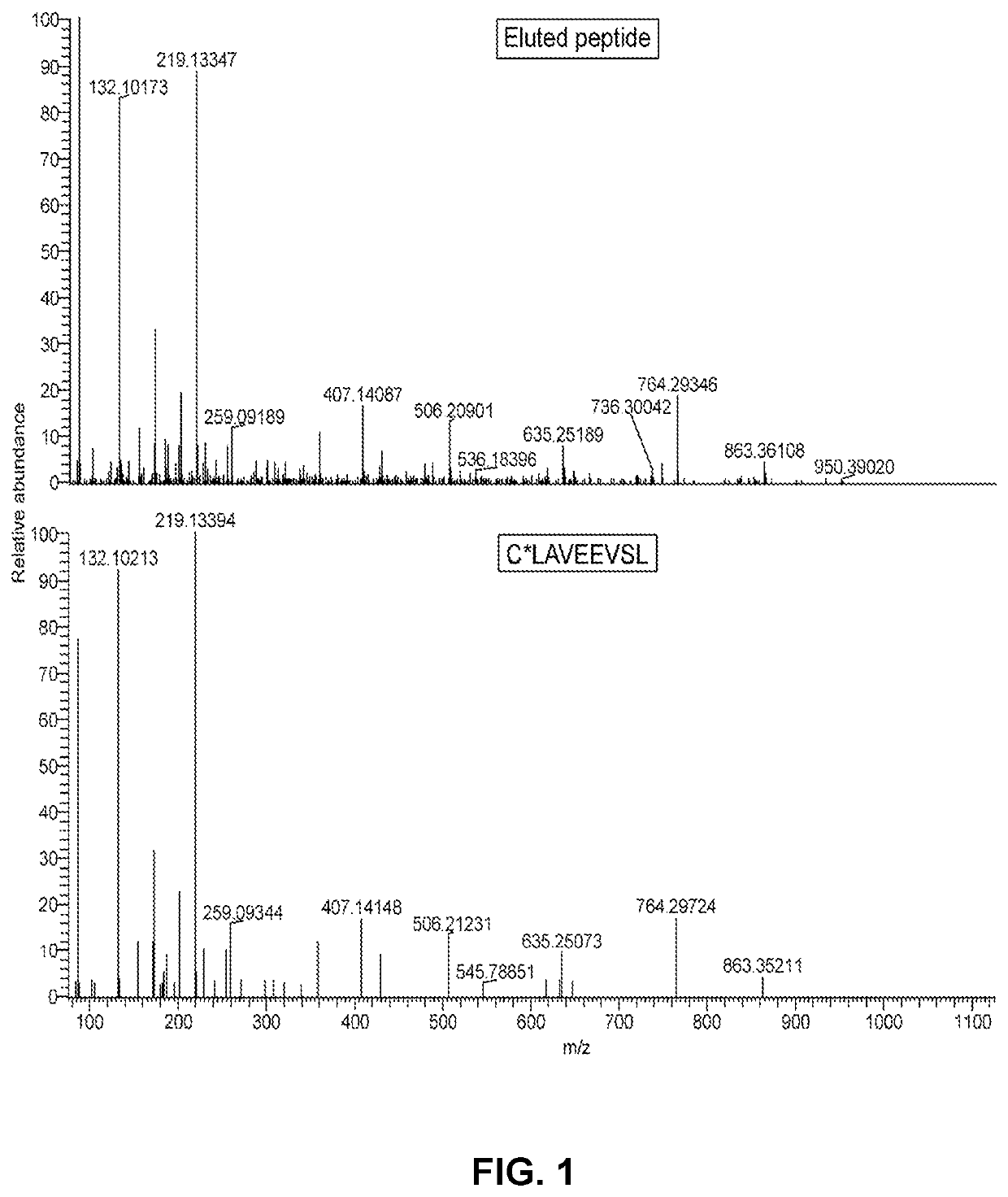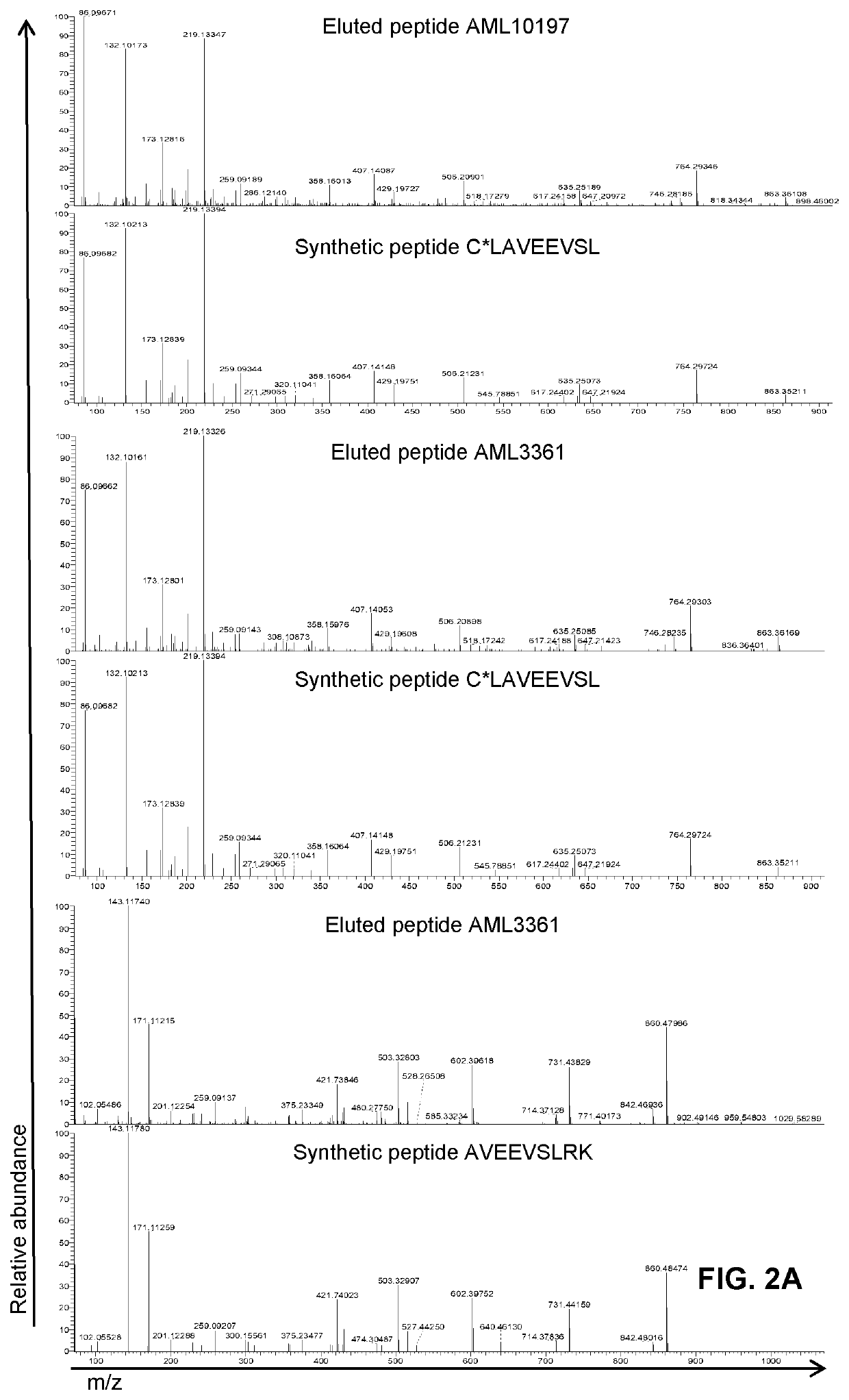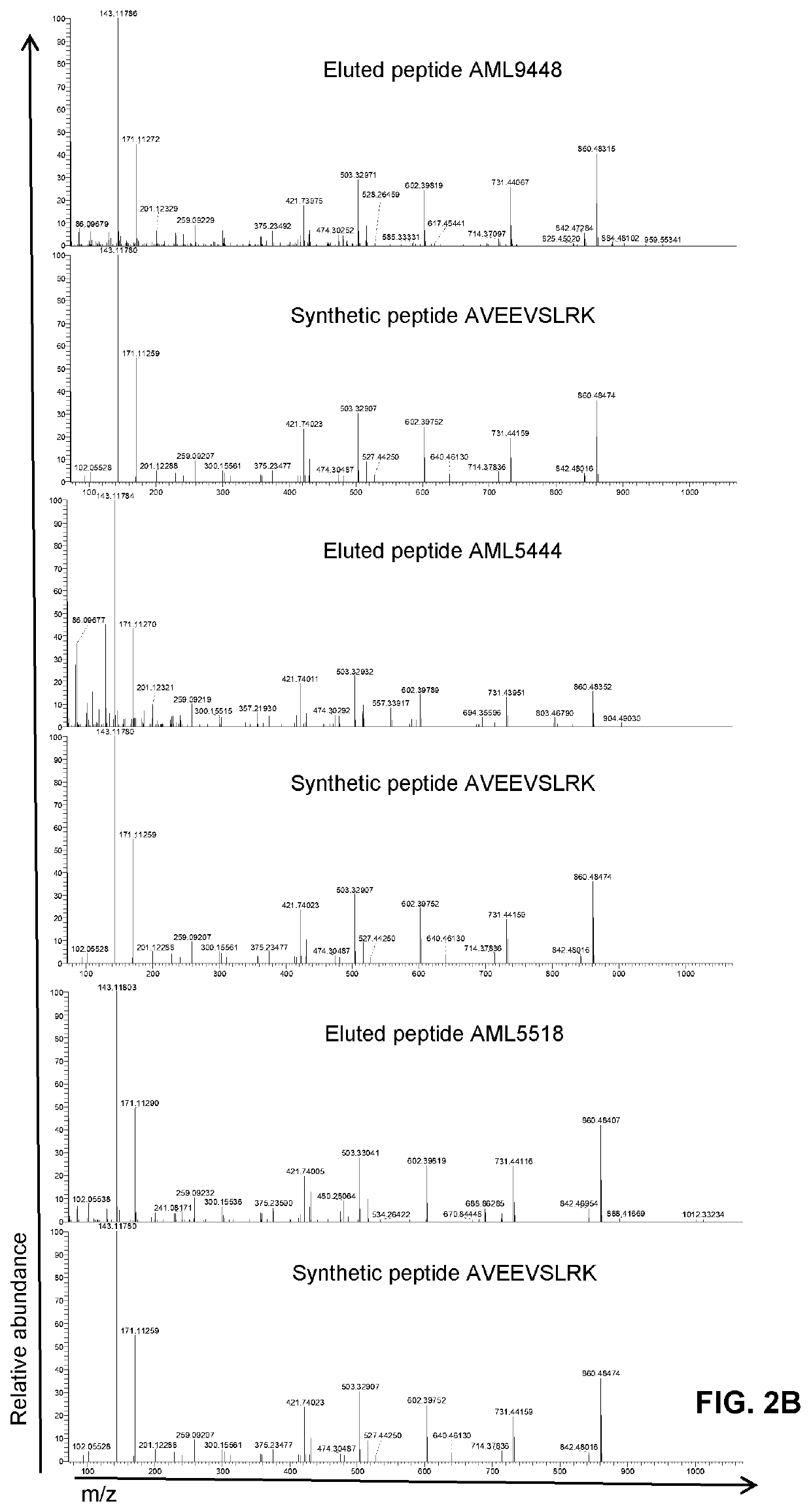Treatment of haematological malignancies
a haematological malignancy and treatment technology, applied in the field of treatment of haematological malignancies, can solve the problems of poor prognosis based on adverse cytogenetic or molecular abnormalities, detectable persistent or relapsed disease after chemotherapy, and limited benefi
- Summary
- Abstract
- Description
- Claims
- Application Information
AI Technical Summary
Benefits of technology
Problems solved by technology
Method used
Image
Examples
examples
Materials and Methods
Study Design
[0335]The objectives of this study were (1) to identify HLA class I ligands from ΔNPM1 on primary AML, (2) to isolate CD8 cells with TCRs specific for HLA class I ligands from ΔNPM1 and (3) to identify TCRs for HLA class I ligands from ΔNPM1 that are capable of mediating specific recognition and lysis of primary AML after gene transfer. HLA class I ligandome data were generated for 12 primary AML using tandem mass spectrometry and searched for peptides matching the alternative reading frame of ΔNPM1. HLA-A*02:01 pMHC tetramers were produced for one identified peptide and used to isolate specific CD8 cells from 6 HLA-A*02:01 positive AML patients and 6 healthy HLA-A*02:01 positive individuals. T cell clones isolated from healthy individuals were screened for pMHC tetramer staining and tetramer positive T cell clones were tested for reactivity against peptide-loaded T2 cells and primary AML with ΔNPM1 or wtNPM1 by IFN-γ ELISA. From one strongly reactiv...
PUM
| Property | Measurement | Unit |
|---|---|---|
| pH | aaaaa | aaaaa |
| flow rate | aaaaa | aaaaa |
| inner diameter | aaaaa | aaaaa |
Abstract
Description
Claims
Application Information
 Login to View More
Login to View More - R&D
- Intellectual Property
- Life Sciences
- Materials
- Tech Scout
- Unparalleled Data Quality
- Higher Quality Content
- 60% Fewer Hallucinations
Browse by: Latest US Patents, China's latest patents, Technical Efficacy Thesaurus, Application Domain, Technology Topic, Popular Technical Reports.
© 2025 PatSnap. All rights reserved.Legal|Privacy policy|Modern Slavery Act Transparency Statement|Sitemap|About US| Contact US: help@patsnap.com



